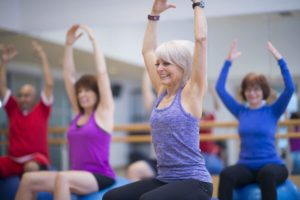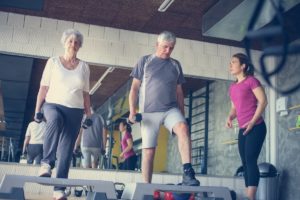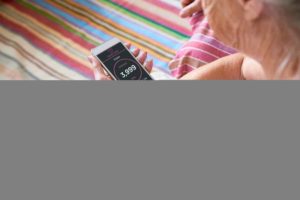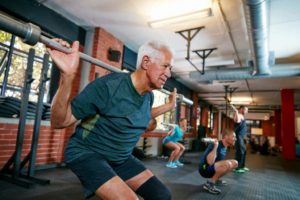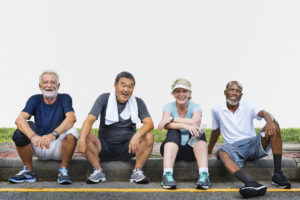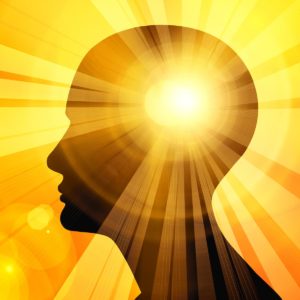Functional Aging/Older Adults
A Defense Against Age-Related Slowing
Age-related slowing of movement plays a critical role in the declining health of older adults. Slowing typically begins after age 62 with a marked decrease in gait velocity. It can lead to dysfunction, poor mental and physical health, a loss of independence and higher risk of mortality.
The Optimal Amount of Exercise for Heart Health
Arterial stiffness, which increases with sedentary living, is associated with higher risk of heart disease. It’s well known that exercise can help, but how much—or how little—is enough?
“While near-daily, vigorous lifelong (>25 years) endurance exercise training prevents arterial stiffening with ageing, this rigorous routine of exercise training over a lifetime is impractical for most individuals,” noted the authors of a new study, which aimed to determine the least amount of exercise necessary to reduce arterial stiffness.
Exercise Doesn’t Slow Dementia, Say Researchers
Research has supported exercise as having the potential to keep dementia at bay or at least to impede its progression. A recent study suggests that physical activity may not be as effective at warding off cognitive decline as previously thought.
In this study, published in BMJ (2018; 361, k1675), 329 individuals were assigned to an exercise intervention, while 165 subjects received “usual care.” Average age was 77, and each participant had a clinically confirmed dementia diagnosis.
How Fast You Walk May Affect How Long You Live
Want to outwalk the grim reaper? Pick up the pace, say researchers. A new study from the United Kingdom suggests that quicker walking may add years to your life.
The study’s primary aim was to examine the impact of walking pace and volume on all-cause mortality. To determine this, researchers looked at mortality records for 50,225 individuals from Scotland and England who had self-reported their walking data via interview.
Exergaming May Improve Independence Among Older Adults
Maybe you’ve thought about integrating exergaming—exercise combined with video games and other elements of technology—into some of your classes or sessions. Don’t forget to include older adults. A recent study found that seniors with mild cognitive impairment (MCI), a precursor to Alzheimer’s, showed significant improvement in certain complex thinking and memory skills after exergaming.
Stand Up to Aging
Getting up off the ground grows more difficult as we age. Muscles and bones weaken, coordination becomes less fluid, and simply doing chores around the house gets more challenging. Ground-to-standing (G2S) exercises address these changes. hile even performance athletes can benefit from G2S drills (see the sidebar “G2S Exercises Also Help Performance Athletes”), they’re supremely helpful for older exercisers who are at risk for broken hips and other threats to their mobility.
Bone Loss: A Primer
Bone loss is a normal part of aging, and understanding it can help fitness professionals to develop preventive strategies for their clients.
A New Way to Combat High Blood Pressure During Menopause
Researchers have linked menopause with arterial stiffness and high blood pressure. A recent study of Korean women, led by The North American Menopause Society, suggests that taking the stairs is a good way to manage those conditions.
The Best Exercise for Alzheimer’s Disease
If you were asked to choose among cardiovascular exercise, resistance training and a combination of both to help people with Alzheimer’s disease, what choice would you make?
Researchers from the University of Connecticut wanted to understand the effects of exercise—if any—on cognitive decline in those at risk of or diagnosed with Alzheimer’s. The scientists performed a meta-analysis of 19 studies (23 exercise interventions) featuring 1,145 adults aged 77 ± 7.5 years.
4,000 Steps a Day for Brain Fitness
By walking more than 4,000 steps a day, adults aged 60 and older can improve both attention and mental skills, according to a study in the Journal of Alzheimer’s Disease (2017; doi:10.3233/JAD-170586).
University of California, Los Angeles, researchers examined the relationship between physical activity and cognitive function in nondemented older adults with memory issues. For 2 years, researchers tracked the number of daily steps taken by 26 older adults and conducted neuropsychological tests and MRI scans to measure thickness of brain structures.
What Fitness Pros Need to Know About New Blood Pressure Guidelines
New guidelines on high blood pressure made headlines late last year because they suggest that nearly half of all Americans have hypertension—up from about one-third under previous guidelines. This is big news for fitness professionals because regular exercise is an excellent tool for regulating blood pressure. In this issue, we’ll review what you need to know about the new blood pressure guidelines.
Pillars of Functional Training for Active Aging
Healthy aging is more than the absence of disease, according to the World Health Organization (WHO): “For most older people, the maintenance of functional ability has the highest importance” (WHO 2015). Colin Milner, founder and CEO of the International Council on Active Aging in Vancouver, British Columbia, echoes these comments. “When looking at the healthy aging market today, the focus is all about function,” he says.
The Best Exercise to Prevent Mental Decline
Exercise can boost brain health and slow cognitive decline. One form of exercise in particular seems to produce the best benefits—dancing!
How Older Adults Can Boost Psychological Well-Being
Researchers from Finland have determined that older adults who pump iron can build more than muscle: Resistance training can strengthen their outlook on life. The scientists say frequency is an important variable in maximizing benefits.
Community Cooldown
Life isn’t predictable, so why should our movements be? Add fun games to your cooldowns to help active agers learn to react to on-the-spot activities in a functional way. The following games include a social neuroscience component that builds camaraderie, upgrades reaction time and improves balance. Try them toward the end of class to get seniors on the same page.
Storks and Gazelles
Purpose: to train gait efficiency and reaction time.
Taking the Right Step—Walking Research for the Ages
Have you ever heard clients say that “walking doesn’t count” as exercise? The truth is that walking can be a valuable part of your clients’ wellness routines—but how those steps fit into a whole program may depend on age. Two different studies offer valuable feedback on the benefits of walking through a workout.
STUDY #1: When Walking and Weight Loss Are in Step
Social Support and Seniors
Fitness pros working with seniors deal with the physical and cognitive losses of aging every day. But what about the social support losses?
TV Time a Threat to Mobility in Older Adults
To minimize their future immobility risk, older adults should cut television time and boost activity levels, says new research.
Scientists looked at data on 134,269 subjects aged 50–71 from six states over 8 years. The data included self-reported total sitting time, television viewing time and physical activity intensity, as well as health histories. At follow-up, study participants provided information on walking pace and mobility, indicating whether they were “unable to walk” or could keep up an “easy walking pace.”
Alzheimer’s and the Joy of Exercise
Today, approximately 5.5 million adults in the United States have Alzheimer’s disease (AD). By the year 2030, people aged 65 or older will make up 20% of the country’s total population, and the number of adults with AD is projected to reach 8.4 million (Alzheimer’s Association 2017a).
Protecting the Aging Brain
Study after study shows that physical activity, diet and other lifestyle factors keep the brain healthy as we age—contrary to the popular notion that cognitive function inevitably declines in the later years of life.
